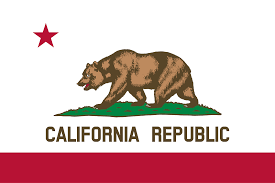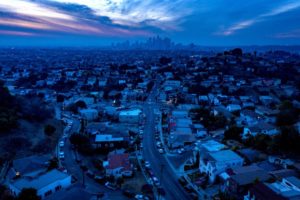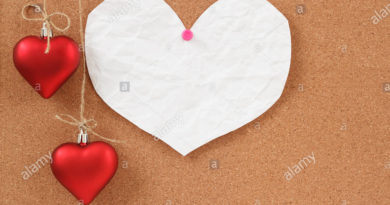L.A. STORIES: Essential California – 12.29.2020
.
FROM ASEANEWS.NET:
|
|||||||||||||||||||||||
| December 29, 2020 |
| Good morning, and welcome to the Essential California newsletter. It’s Tuesday, Dec. 29, and I’m writing from Los Angeles. A quick programming note: My colleagues will be filling in for me while I take a few days off, and I’ll be back in your inbox next Wednesday.
A few weeks ago, we asked you to tell us about your most indelible memory of 2020. So many of you shared so much with us, digging through your days to define the image, interaction or moment that remained singular to you through the most surreal of years. Thank you. Taken together, the responses formed a kind of kaleidoscopic year in review. All of the era-defining moments were there but refracted through individual lives. *** In the first month of the year, a young mother in Los Angeles made dinner in her apartment kitchen. NPR played as she cooked, just background noise, really. Until it cut through. The story was about a city whose name few of us had known a few weeks prior, under siege from a novel virus. The woman distinctly remembers feeling — right then, in the moment — like it was foreshadowing. Like this was the scene that would play just before the movie got scary. In the beginning of the year, history blared toward us in push alerts and the text scrolling across the bottom of our TV screens. But it was far away. It couldn’t touch us. Our lives were still so full, and there were plenty of other things to cheer and grieve. Still January: Norma Montenegro was on her way to the gym when a friend called to ask if she’d heard the rumor. Montenegro, an HR professional in Los Angeles, pulled her car over right there on Brand Boulevard. When she opened her phone and saw the TMZ tweet — “BREAKING: Kobe Bryant Has Died In A Helicopter Crash” — she let out the loudest scream of her life. She sobbed in her parked car for an hour before she could drive home. We continued with our business in February, as the headlines worsened in other places. There was more of that foreshadowing, more terrible scenes from afar. In March, it all came home to roost. Somewhere in Sacramento in the second week of March, Juan Altamirano was watching a dumb, mindless movie on TV. And then he looked at his phone and saw that Tom Hanks had tested positive for the coronavirus. Today is the day, the environmental lobbyist immediately thought to himself. Today is the day that my life changes. The memories readers shared from that strange sliver of time all sounded like variations on Altamirano’s — personal turning points, where the crisis at hand suddenly became real to them. Retired journalist Becci Rogers was sitting in Sacramento’s Golden 1 Arena, waiting for tipoff at a Kings game. Then the announcement came over the loudspeaker. The game had been postponed and the thousands of fans were being asked to leave. The NBA wouldn’t play again for months. Like a half-dozen other respondents, Yifang Nie’s moment of indelibility came in a barren grocery store midway through the month of March. R.E.M’s “It’s the End of the World as We Know It (and I Feel Fine)” blared over the speakers in a San Francisco Trader Joe’s, as she searched the vacant shelves. There was nothing left to buy. Mayors and governors entered our living rooms in daily briefings. We came to know our local public health officials by name. World events unraveled our daily lives and rearranged them in new and cloistered shapes. I cried my way through Zoom weddings and bar mitzvahs and brises, remaining on the same couch in the same city while small clusters of people I loved assembled themselves into the frame in various parts of the country. A mother in Santa Clarita described viewing her daughter’s graduation ceremony on YouTube. After, the family drove to a local park. Sitting in their gray minivan, they watched as their oldest daughter walked across a stage to collect her high school diploma. Even a once-in-a-century pandemic couldn’t stop the milestones of life. Nor could it prevent the ordinary tragedies. More than a few people described their indelible memory as a last moment with a loved one, before a death that had nothing to do with COVID-19. They were, in a strange way, among the lucky ones — at least they could be there in person. A lawyer in Los Angeles described not being able to say goodbye to a friend dying of cancer. COVID-19 visiting restrictions at the hospital prohibited it. She watched the funeral on Facebook Live with a few of her closest friends, spaced six feet apart in front of a big-screen TV. It was all so surreal. They made a point of going into another room to blow their noses when their weeping required it, because doing so would mean lowering their masks. Everything happened on screens. In the last days of May, a video documenting George Floyd’s death under the knee of a Minneapolis cop ricocheted around the globe. For some of the country, the video was gutting but unsurprising, reflecting a reality they were already all too familiar with. But it woke many others out of a kind of stupor, forcing them to grapple with how racism shapes nearly every facet of American life. Millions took to the streets. A summer of fear and fires followed. Filmmaker Sarah Gertrude Shapiro remembers a particularly apocalyptic moment when a record-setting heat wave broiled Los Angeles, as blazes burned in all directions. Ash rained down from the sky as she frantically hosed down her pandemic-acquired pet chickens, trying to keep them alive in the 119-degree heat. Several Bay Area readers described the morning they awoke to orange, Martian skies. Amy Scott of San Francisco takes in the view from the Embarcadero as smoke from various wildfires burning across Northern California mixes with the marine layer, blanketing San Francisco in darkness and an orange glow on Sept. 9. (Getty Images) In the Sierra Nevada mountains, Fresno Bee reporter Carmen George remembers watching an 85-year-old woman walk through the ruins of her former life for the first time after the Creek fire. Amid the ashes was a ceramic jar that the woman’s son had given her as a gift before he died, unscathed by the fire. George asked the woman if it was special, seeing that this meaningful object had somehow survived. No, the woman told her. “Nothing is special anymore.” It was a year that often felt merciless. Camilo Loza, a line cook in Los Angeles, was serving food on skid row this fall when a man quietly asked if he could have a little extra. The man said he hadn’t eaten in five days. The moment seared itself into Loza’s brain because there were so many things he wanted to do and say. But the line behind the man was too long to do anything more than wish him well, heap a little extra onto his plate, and turn to the next person waiting to be served. Mahasin Ahmad, a certified nurse assistant and single mother in San Bernardino, described the feeling of constantly being at a breaking point. Juggling two jobs to make ends meet, there was never enough time to give her little ones the help they needed with school. And the bills just continued to pile up. But there were also flashes of radiance. Sue Kamm, a retired librarian in Silver Lake, recalled ringing a large school bell after finishing her last chemotherapy treatment for ovarian cancer. She has remained cancer-free through two follow-up CT scans. Several people described their jubilation at the results of the presidential election, and the subsequent dancing in the streets. The Dodgers and the Lakers both won championships. Pam Haas’ moment of indelibility came in a San Pedro church, looking into the brown-green eyes of the man she loves. She and Ken Haas had first met and briefly dated in the 1960s, before life tugged them in different directions. He found her again more than five decades later on LinkedIn, and flew across the country to visit her a few weeks later. On Valentine’s Day of this year, they exchanged wedding vows. The first-time bride said her brothers were happy she finally decided to settle down at 76. Up in Sonoma County, Penny Paden’s telephone rang as she was emptying the dishwasher one day this fall. In March, the Padens’ beloved cat Roxanne had disappeared. They had papered the neighborhood with flyers, searching and searching. Then COVID-19 came, and the sorrows of the world drowned out whatever faith was left in finding Roxanne. But a year and a half later, there was a veterinarian on the phone, saying someone had dropped off a scraggly, stray cat with a microchip identifying her as theirs. Some losses are permanent. And sometimes joy resurfaces long after we’ve given up hope. We are now 363 days into leap year 2020. A million impossible things have already happened, and who knows what the next three days could bring. May your final hours be bright and blessedly unmemorable. And now, here’s what’s happening across California: L.A. was uniquely vulnerable to this COVID-19 catastrophe. Here is what went wrong. In this clear and deeply researched story, my colleagues unpack the question that has dogged Angelenos for weeks: Why have things gotten so bad here, even with mask rules and stay-at-home orders? Los Angeles Times December is a COVID-19 disaster in California. January is shaping up to be bleak too for deluged hospitals. Officials are bracing for more COVID-19 hospitalizations as people who participated in holiday gatherings or travel and became infected with the coronavirus begin falling ill. Los Angeles Times Note: Some of the sites we link to may limit the number of stories you can access without subscribing.
L.A. STORIESTens of thousands of travelers are expected to pass through Los Angeles International Airport this week, amid an alarming surge in coronavirus cases in Los Angeles County and pleas from public health officials for people to stay home. Los Angeles Times COVID-19 has stolen lives, broken families, widened the wealth gap and rewired life in East L.A. Across the predominantly Latino neighborhood, which spans seven square miles, more than 15,000 residents — 1 in every 10 people — have tested positive for COVID-19. Los Angeles Times , , An aerial view of City Terrace. It’s been more than 280 days since California went into lockdown, and every street corner of East L.A. reveals some sign of what the pandemic has cost its residents. (Brian van der Brug / Los Angeles Times) The L.A. County Department of Public Health is urging film productions in the area to “strongly consider” pausing their operations for a few weeks amid the continued surge in COVID-19 cases. Variety L.A. County’s deadliest week reveals pain, inequity and injustice. Over a summer week, 29 people were victims of homicides in Los Angeles County, making it the deadliest in a year in which homicides rose significantly. The lives lost offer some answers about the increase in violence. Los Angeles Times Support our journalism Subscribe to the Los Angeles Times. POLITICS AND GOVERNMENTThe House voted overwhelmingly Monday to increase COVID-19 relief checks to $2,000, meeting President Trump’s demand for bigger payments and sending the bill to the GOP-controlled Senate, where the outcome is highly uncertain. Los Angeles Times [See also: “Stimulus checks are coming. How much will you get and when?” in the Los Angeles Times] As President Trump loses ground in Washington, the House votes to override defense bill veto. In a bipartisan vote Monday evening, the House took the first step in rebuffing the president’s veto of the defense bill, which had passed overwhelmingly in both chambers this month. Los Angeles Times COPS, CRIME AND COURTSThe Orange County Sheriff’s Department paid nearly $1 million a year in salary for problem deputies to stay home. “In an era when activists are calling for elected leaders to redirect police funding, some advocates say perhaps they should start with paid disciplinary leave.” Orange County Register Vandals smashed a Breonna Taylor sculpture in Oakland. Police are investigating but provided few details. Los Angeles Times
HEALTH AND THE ENVIRONMENTTracking who gets vaccinated is vital for public health, but it’s raising privacy concerns. Los Angeles Times Los Angeles’ first significant storm of the season brought intense lightning, rolling thunder, hail and road hazards, but no significant mudslides or debris flows in recent burn areas. Los Angeles Times CALIFORNIA CULTUREFrom COVID to curbside, 2020 changed our vocabulary too. The English language is always in flux, but linguists and lexicographers say this year has been especially noteworthy for the sheer volume of words that have rapidly entered into daily use. Los Angeles Times Thousands of bats live in a Sacramento freeway underpass. Here’s how Caltrans is “evicting” them. Sacramento Bee ICYMI and need some holiday reading: Thirty of our favorite California stories published in 2020, from The Times and beyond. Los Angeles Times A poem to start your Tuesday: “The Layers” by Stanley Kunitz. Poetry Foundation (Today’s poem was recommended by Essential California reader Sepand Soheili in Santa Monica.) Free online games Get our free daily crossword puzzle, sudoku, word search and arcade games in our new game center at latimes.com/games. CALIFORNIA ALMANACLos Angeles: sunny, 64. San Diego: sunny-ish, 63. San Francisco: sunny, 57. San Jose: sunny, 61. Fresno: partly sunny, 54. Sacramento: sunny, 59. More weather is here. AND FINALLYToday’s California memory comes from Jim Isenberg: I remember eating at the Apple Pan, which opened in L.A. in 1947. I’m 75 now, but would go with my older brother to eat Hickory burgers and fries (chocolate cream pie too) when I was a little kid. The guy who always took our order had a family and he studied at UCLA. He would tell us how much he loved working at Apple Pan! His story somehow encouraged me that I too could go to college. I knew that my family couldn’t support me, but now I knew that I could get a job and go to school too. The Apple Pan was also the center of Jewish life for me as we all knew that Temple Isaiah’s Rabbi Albert broke the Yom Kippur fast at Apple Pan! If you have a memory or story about the Golden State, share it with us. (Please keep your story to 100 words.) Please let us know what we can do to make this newsletter more useful to you. Send comments, complaints, ideas and unrelated book recommendations to Julia Wick. Follow her on Twitter @Sherlyholmes. |
||||||||||||
|
||||||
|
.


.
SIGN UP TO RECEIVE OUR EMAIL
.
The most important news of the day about the ASEAN Countries and the world in one email: aseanews.net













